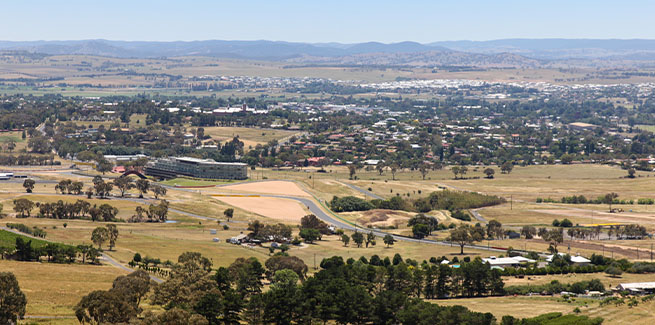According to recent data from CoreLogic and Domain, regional markets have been faring strongly in the past few quarters, as Australians look to live outside the capital cities while remote working has become the norm.
Property research and analytics group CoreLogic has found that while the fall in rental values has eased from when the COVID-19 pandemic began (and many renters sought rental support/holidays from their landlords), rental values were still falling.
National rental values were down -0.2 per cent in the September quarter, an improvement from -0.5 per cent over the June quarter. This takes the typical asking rents across the nation to $443 per week.
According to CoreLogic, the improvement in the rate of decline of the broad figures can be attributed to a rise in regional market rents.
Indeed, regional dwelling rental rates rose by 1.2 per cent over the third quarter of 2020, after a lower 0.2 per cent rise over the June quarter.
In fact, regional rents are now 3.0 per cent higher than they were last year, the figures show.
Meanwhile, capital city rental markets recorded a 0.7 per cent reduction in rents over the quarter and were -0.1 per cent lower year-on-year.
Tim Lawless, CoreLogic’s head of research, commented: “The weakest rental conditions are emanating from the inner-city precincts where both a supply and demand shock are having a negative impact on rental rates. These precincts have recorded a surge in new unit supply over recent years, while more recently demand has fallen sharply due to stalled migration and weaker labour market conditions across industries where workers are more likely to rent.
“Rental markets across Perth and Darwin have clearly turned a corner, after consistently recording the weakest rental conditions post-mining boom. Rising rental rates are a symptom of tight supply due to low levels of investment and residential construction activity over recent years while demand looks to be improving.”
Likewise, the recent Domain House Price Report for the September quarter 2020 also found that property price growth has also continued across regional areas in NSW and Victoria, highlighting how more Aussies may continue moving to regional areas as a result of the flexible working arrangements driven by COVID.
For example, Central Coast unit prices jump by close to 10 per cent over the quarter and a whopping 24.4 per cent year-on-year, which the group said could potentially point to the growing trend of Sydneysiders moving to regional areas as a result of new working arrangements driven by COVID.
Byron Bay houses also increased in value, rising 30 per cent on September 2019 levels to reach a median price of $1.16 million at the end of September.
In Victoria, the Southern Grampians have seen house prices increase 31 per cent year-on-year, reaching a median price of $295,000.
Tasmania’s Derwent Valley was found to be the region with the largest annual increased in median house prices (however, the state has been performing well generally), rising by 28 per cent to $352,000.
In Queensland, median house prices have increased by 22.7 per cent in Issac, edging up to a median of $270,000.
SA and WA house prices have also increased, though less than the other states. The region with the largest increase in values was Berri Barmera in the September 2020 quarter (up 17.6 per cent on last year), while WA’s Northam was up by the same percentage year-on-year, to $317,500.
Domain senior research analyst, Dr Nicola Powell, commented: “The resources sector will play a pivotal role in WA’s economic recovery and, unsurprisingly, demand has grown at a higher pace in regional WA relative to Greater Perth. Major infrastructure projects will help assist global economic recovery, and WA should benefit from this increased demand in commodities.”.
[Related: Inner-city rent values hit harder amid COVID-19]
 ;
;